Princeza (1863)
Table of Contents
1 - Summary #
The Princeza, a three-masted brigantine, met an unfortunate end on March 15th 1863 when it struck near Amity Point while attempting to make the south entrance to Moreton Bay during a gale1,2. The vessel’s captain had signaled for a pilot after successfully rounding Point Lookout but was challenged by rapidly shoaling water. Despite desperate attempts to steady the vessel by discarding part of its cargo and cutting the masts, the crew ultimately had no choice but to abandon ship1,2.
Built in Aberdeen in 1850, the Princeza was owned by Messrs. B.B. Nicholson and Co., of Melbourne. The vessel was relatively new to intercolonial trade at the time of her demise. She measured up at 141 tons and was under the command of Captain Sayers during her calamitous final voyage2. The Princeza had embarked from Melbourne on February 11th for Port Frederick in Tasmania in order to complete her cargo load before setting sail for Moreton Bay on February 28th. Her cargo included hay, oats, wheat, potatoes, timber, spirits and preserved provisions2.
The initial grounding of the ship caused minimal damage but an untimely rising sea coupled with a turning tide hindered attempts at anchoring safely off shore. This resulted in further groundings throughout that day which rendered ineffective any attempts at manoeuvring due to her close proximity to land2. As evening fell on March 15th 1863, Captain Sayers began lightening load by throwing cargo overboard hoping this would ease pressure on his already beleaguered ship’s hull; even ordering masts cut away in desperation as high seas washed over his vessel fore and aft. When eventually able to launch a lifeboat it promptly capsized but was subsequently righted and used to transport crew members ashore while Captain Sayers and two volunteers stayed aboard awaiting rescue2.
Upon inspection following its purchase by Alexander Muir and James Low on March 18th, three days after it was wrecked, it was found that the once robust vessel had turned upside down with her topsides carried away by heavy seas. Despite their efforts to float the hull with assistance from another ship named ‘Lady Bowen’, another gale forced them to cut loose from their salvage operation; consequently driving ashore what remained of the Princeza near the heads of South Passage1.
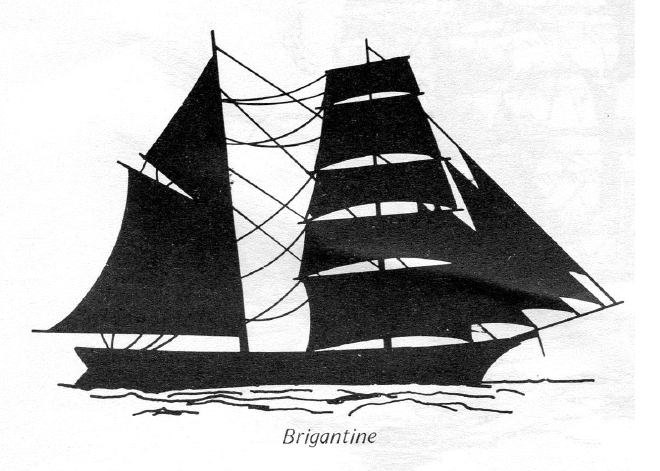
2 - Location #
The coordinates under consideration have been sourced from AUCHD1. However, due to the low resolution of these coordinates, their accuracy should be considered an approximation at best. Additionally, while the Queensland Globe3 photograph depicts the location on a sandbar, it must be noted that sandbars are subject to rapid temporal shifts. Therefore, this image may not accurately represent the geography as it existed in 1863.
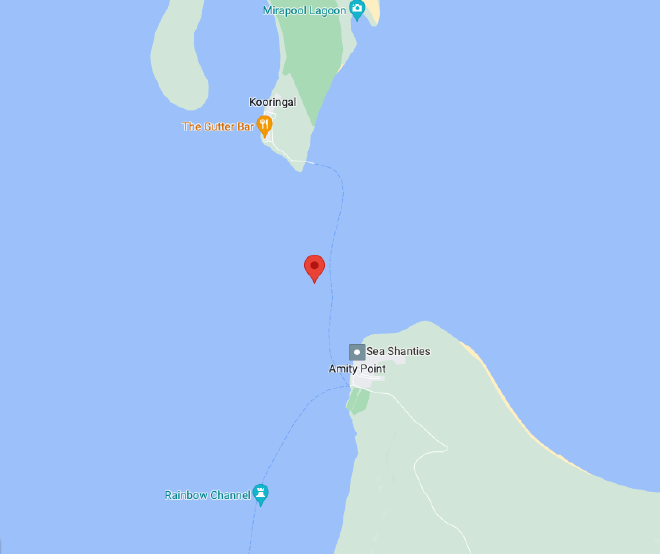
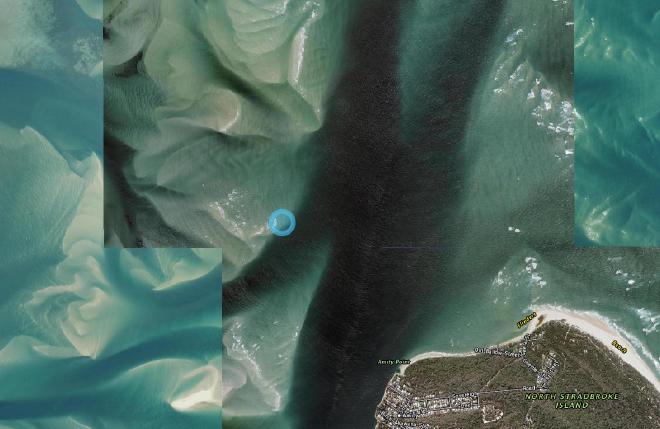
3 - News stories from history #
3.1 - The Sydney Morning Herald #
The following is quite intriguing as it constitutes Captain Sayers' personal recounting of the incident. It is taken directly from The Sydney Morning Herald, Monday 23rd March 1863, Page 42.
The following picture is a scan of the article from The Sydney Morning Herald, Monday 23rd March 1863, Page 42.
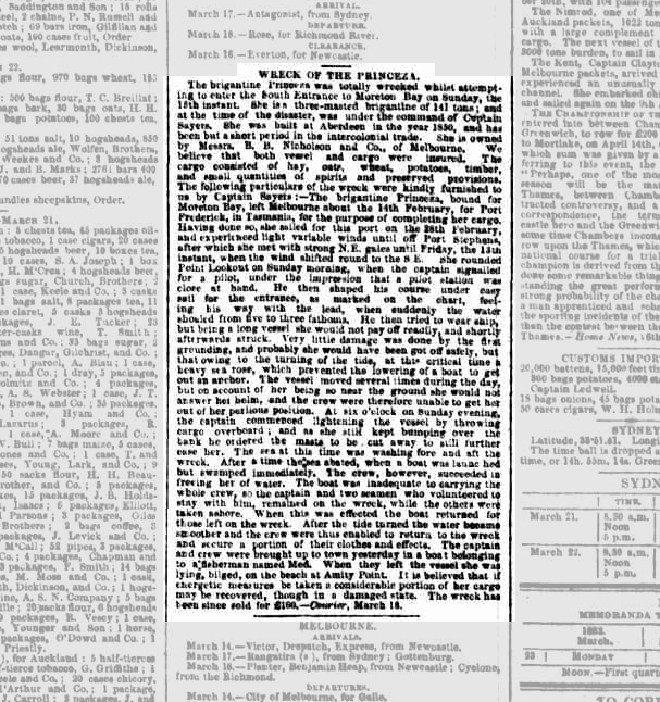
3.2 - The Brisbane Courier #
It was highlighted as one of The Brisbane Courier’s “From Fifty Years Ago” articles on Saturday 22nd March 19134.
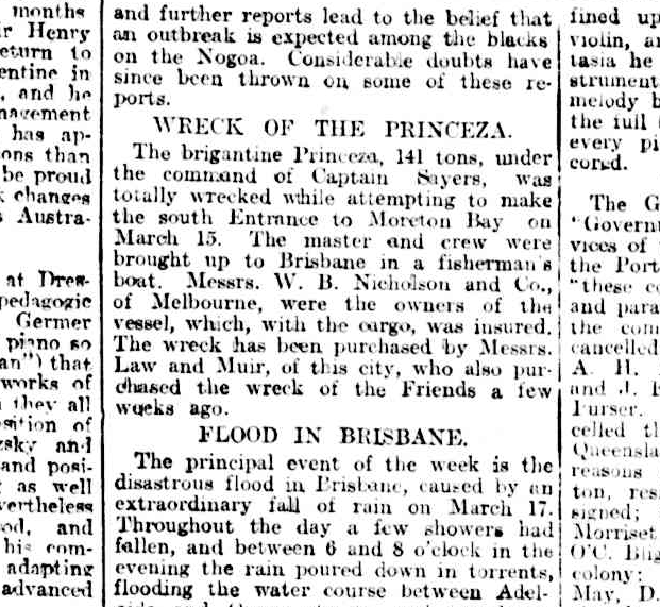
3.3 - Some more highlights #
A notice to looters from The Courier, Saturday 21st March 1863, Page 15.
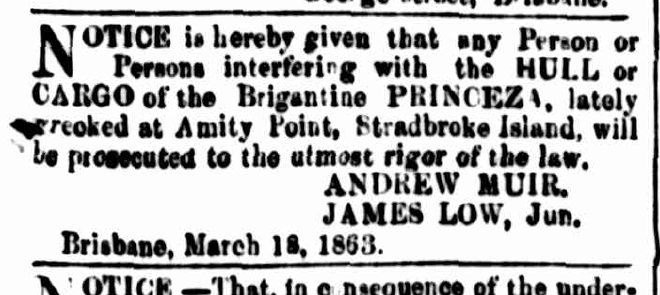
An article from The Argus (Melbourne), Wednesday 4th February 1863, Page 4 showing that Princeza, under Capt. Sayers, left “for River Mersey, V.D.L”6 which I believe is River Mersey, Van Diemen’s Land (now known as Tasmania)7. Even though the colony of Van Diemen’s Land was officially changed to Tasmania in 18567, it is possible it was still referred to as VDL for some time.
A vessel is said to be entered outwards or inwards according as she is entered at the custom-house to depart for, or as having arrived from, foreign parts8.
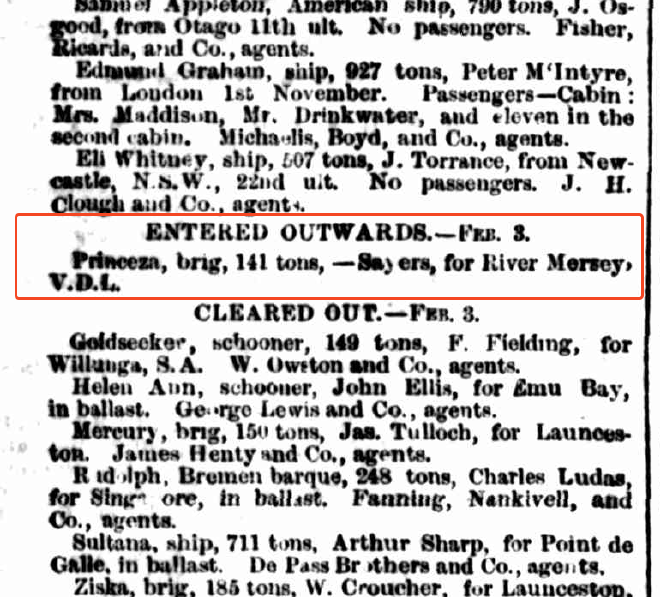
4 - From National Australian Archives #
The following page/picture is an entry in shipping registers of 1862. The register is MELBOURNE, Main Register subsequent to Merchant Shipping Act 1854, Volume 2, 1859-1863, Folio 143. 9
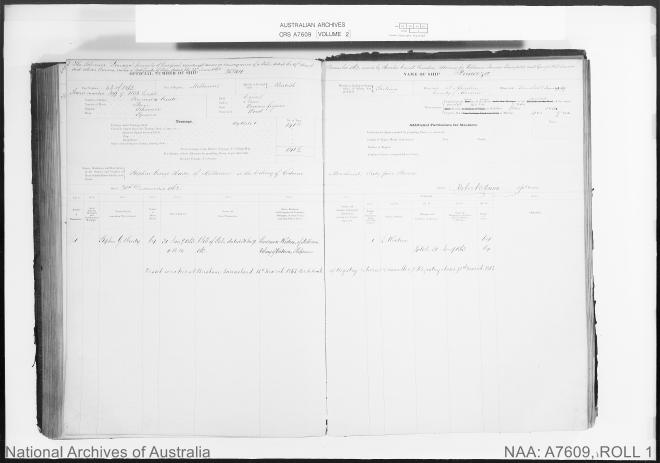
At the top left of the Register is the “Name, Residence, and Description of the Owners..", followed by the handwritten name: Stephen George Henty, of Melbourne. I had found several sites dedicated to Stephen that seem plausible enough it would be the same person. It appears Stephen sold the Princeza on the 31st of January 1863.

MonumentAustralia describes Stephen George Henty (1811-1872) as “An enterprising explorer, merchant and trader, shipowner, whaler and magistrate, he was active in all civic affairs."10. The Casterton & District Historical Society describes Stephen as an “Explorer, Settler, Banker & Trader of Portland Bay, Colony of Port Phillip (later Victoria)" 11. The Victorian Parliament writes that Stephen “became Portland’s leading merchant and started first line of steamers between Portland and Melbourne” 12.
5 - From Aberdeen archives #
Alexander Hall & Co. was the yard that built the ship with the yard number 169. This ship met a tragic fate, wrecked at Amity Point, Queensland on the 15th of March, 186313.
The ship was propelled by sails and was brig rigged. Over its lifespan, it had several owners and masters. From 1849 to 1853, it was owned by Miller & Thomson and registered at Liverpool. Between 1854 and 1856, Lamport & Co took over ownership13. The ship had different masters throughout its operational years. Master W. Boase took command in 1850 till 1853, followed by Master P. Johnson from 1854 to 1855. Master Gordon took over from 1856 to 1857, with Master Lee succeeding him from 1858 to 1859. The last recorded master was C. Smerdon from 1861 till the ship’s wreckage in 186313.
The ship embarked on numerous voyages throughout its life according to Lloyd’s records. In its initial years in service in the early 1850s, it sailed from Aberdeen and between Liverpool and Mexico. Later in mid-1850s, it frequently navigated between Liverpool and Port Natal as well as Workington and Natal under different mastership13. A notable point in its general history includes an incident on November 22nd 1861 when under Master C.Smerdon’s command; it cleared for Guam Pacific Islands with no passengers onboard as reported by South Australian Advertiser (Adelaide)13.
-
The main Princeza site from the Australasian Underwater Cultural Heritage Database (AUCHD). ↩︎
-
This is from The Sydney Morning Herald, Monday 23rd March 1863, Page 4. ↩︎
-
The Queensland Globe provides an online interactive experience to view Queensland’s location based information. ↩︎
-
This is from The Brisbane Courier, Saturday 22nd March 1913, Page 12. ↩︎
-
This is from The Courier, Saturday 21st March 1863, Page 1. ↩︎
-
This is from The Argus, Wednesday 4th February 1863, Page 4. ↩︎
-
National Archives of Australia from Crewlist.org.uk, official number 25844. ↩︎
-
Monument Australia’s page to Stephen George Henty. ↩︎
-
Casterton & District Historical Society’s page to Stephen George Henty. ↩︎
-
Victorian Parliament’s member page to Stephen George Henty. ↩︎
-
This is from Aberdeen Archives, Gallery & Museums. ↩︎
